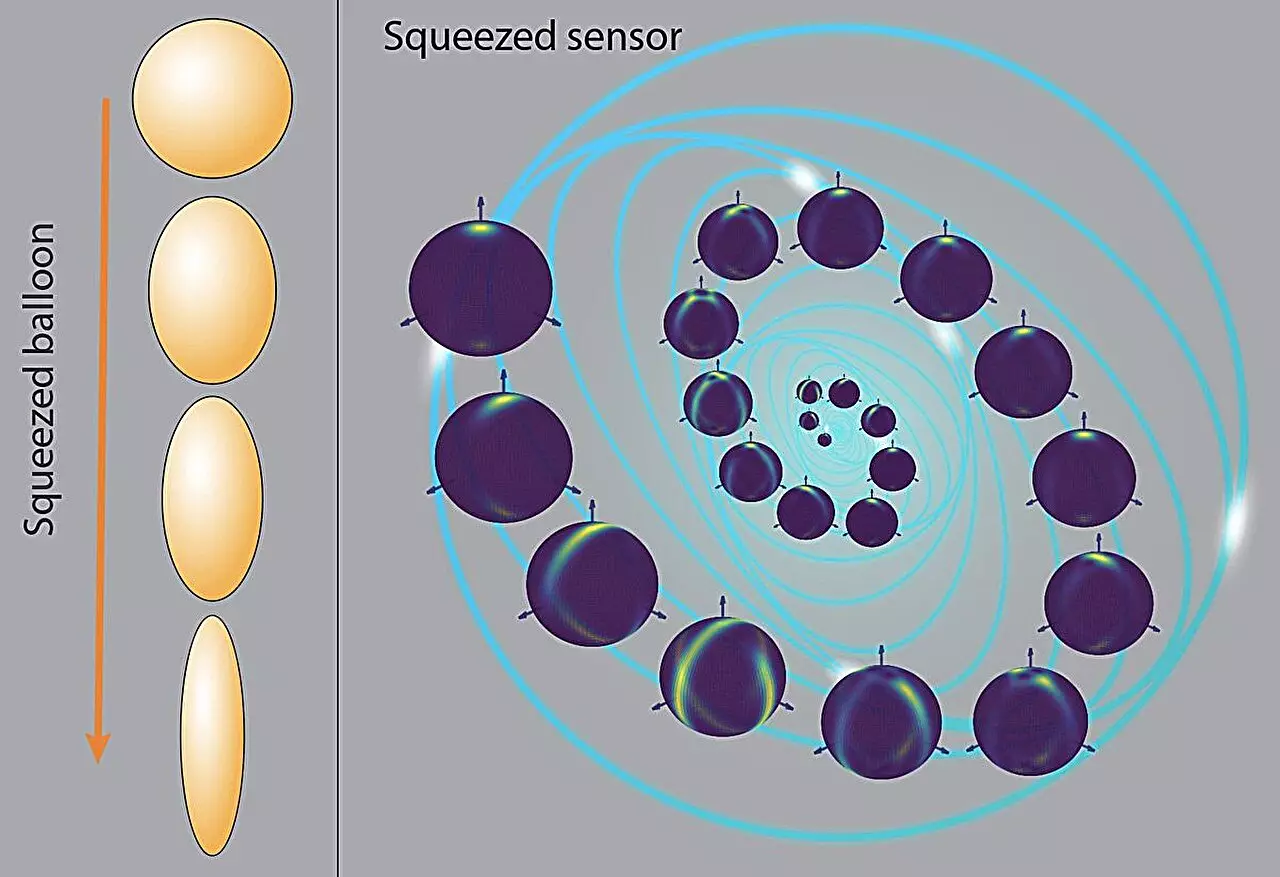Quantum physics, a realm governed by the bizarre principles of uncertainty and probability, continually challenges our classical understanding of reality. Among its intriguing concepts, quantum squeezing stands out as a fascinating phenomenon that has practical implications for measurement precision. This article delves into the theoretical underpinnings and potential applications of quantum squeezing, shedding light on how it may shape the technology of the future.
At its core, quantum squeezing refers to the strategic manipulation of uncertainty within a quantum system. Picture a round balloon; when you apply pressure to squeeze one side, the balloon elongates in the opposite direction. This analogy serves as an intuitive grasp of the principle: reducing the uncertainty of one property, such as position, while simultaneously increasing the uncertainty of another, like momentum. Notably, the total uncertainty—the Heisenberg uncertainty principle—remains unaltered, merely redistributed.
This redistribution of uncertainty allows for increased precision in measuring particular variables. For instance, in the domain of atomic clocks, quantum squeezing has already shown promise, enhancing measurement accuracy. However, real-world applications often demand simultaneous measurement of multiple interrelated variables, where quantum squeezing becomes considerably more complex. The interplay of various factors poses significant challenges in achieving an ideal squeezed state that retains measurement integrity.
Recent research from Tohoku University, led by Dr. Le Bin Ho, has made strides in understanding the efficacy of quantum squeezing in multivariable measurement contexts. This work, documented in the journal Physical Review Research, provides both theoretical insights and numerical validation regarding how quantum squeezing can enhance the precision of measurements across different variables.
Dr. Ho’s study analyzed a situation involving a three-dimensional magnetic field closely interacting with a group of identical two-level quantum systems. Under optimal conditions, the measurement precision can approach theoretical limits. However, it has historically been challenging to translate these ideal conditions to practical applications, where achieving full quantum entanglement in all directions remains elusive.
The implications of improved measurement precision are vast. In fields ranging from quantum imaging to advanced navigation systems like GPS, harnessing quantum squeezing could lead to substantial advancements. For instance, applications in quantum imaging could yield far sharper images than currently possible, revolutionizing diagnostic techniques in medicine.
Furthermore, quantum radar systems designed to detect objects could significantly increase their accuracy, thereby enhancing security and surveillance technologies. In the biosciences realm, the precision afforded by quantum squeezing can bolster techniques such as magnetic resonance imaging (MRI), leading to earlier diagnosis of diseases by improving the sensitivity of biosensors.
Dr. Ho emphasizes, “Our findings contribute to a deeper understanding of the mechanisms behind the improvement of measurement precision in quantum sensing. This research not only pushes the boundaries of quantum science but also lays the groundwork for the next generation of quantum technologies.” Such advancements suggest that the future of quantum mechanics may redefine various technological frontiers.
As Dr. Ho’s research opens the door to new possibilities, it simultaneously highlights numerous challenges. Future investigations will need to address how different types of noise impact quantum squeezing mechanisms. Noise is an inherent aspect of quantum systems and poses limitations in maintaining measurement precision.
The journey toward mastering quantum squeezing for multivariate measurement remains fraught with complexity. Ensuring robustness against environmental disturbances while maximizing measurement precision will be critical for leveraging the full potential of quantum technologies. Continuous exploration in this area could provide profound insights, ultimately reshaping our technological landscape and enhancing our understanding of the quantum universe.
The study of quantum squeezing not only enriches the field of quantum physics but also holds transformative potential for various applications. As researchers like Dr. Le Bin Ho navigate the intricacies of this phenomenon, we stand on the brink of breakthroughs that promise to push the boundaries of what is technically feasible, paving the way for new innovations in quantum measurements and beyond.


Leave a Reply